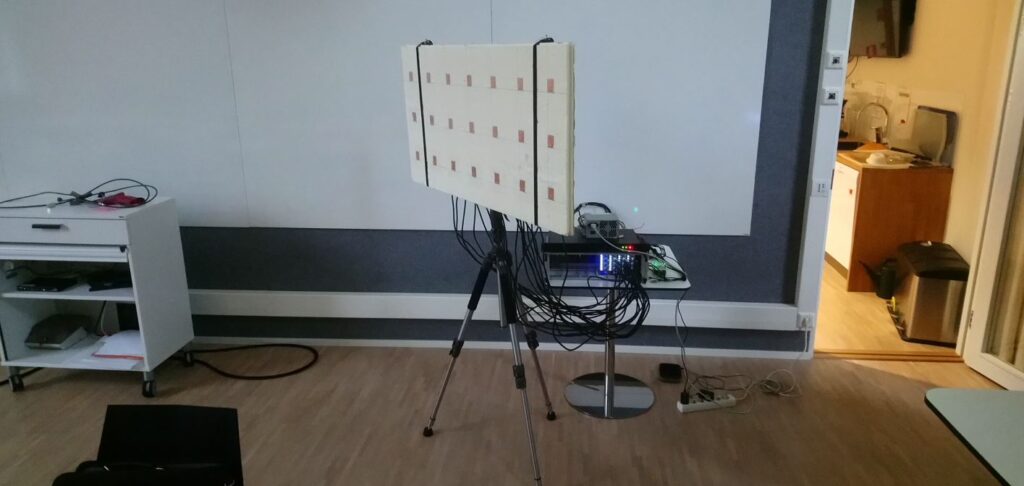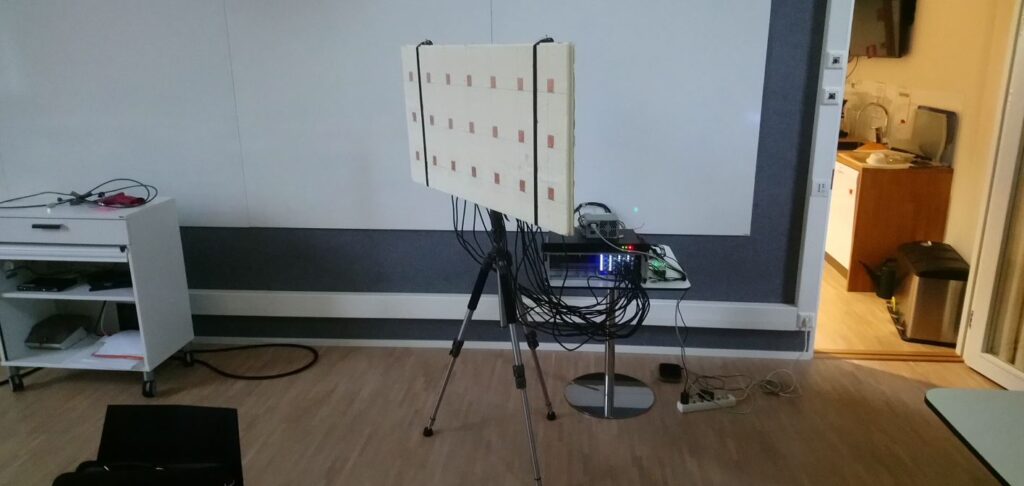Thank you to Laakso Mikko a PhD student at Aalto University School of Electrical Engineering for submitting news about his research group's latest paper involving a 21-channel phase coherent RTL-SDR system. Laakso writes that he an his colleagues have built a (massive) multichannel receiver array from RTL-SDRs to use in low-budget research. The paper presented at EUSIPCO2020 can be found at IEEE, and for free on their research portal (direct pdf link). The code is also entirely open source and available on GitHub.
Phase coherent SDRs enable interesting applications such as radio direction finding (RDF), passive radar and beam forming.
We introduce a modular and affordable coherent multichannel software-defined radio (SDR) receiver and demonstrate its performance by direction-of-arrival (DOA) estimation on signals collected from a 7 X 3 element uniform rectangular array antenna, comparing the results between the full and sparse arrays. Sparse sensor arrays can reach the resolution of a fully populated array with reduced number of elements, which relaxes the required structural complexity of e.g. antenna arrays. Moreover, sparse arrays facilitate significant cost reduction since fewer expensive RF-IF front ends are needed. Results from the collected data set are analyzed with Multiple Signal Classification (MUSIC) DOA estimator. Generally, the sparse array estimates agree with the full array.
Mikko notes that his next paper on applying deep neural nets to the problem of near-field localization will be presented at this years VTC2021 conference, so we are looking forward to that paper too.

